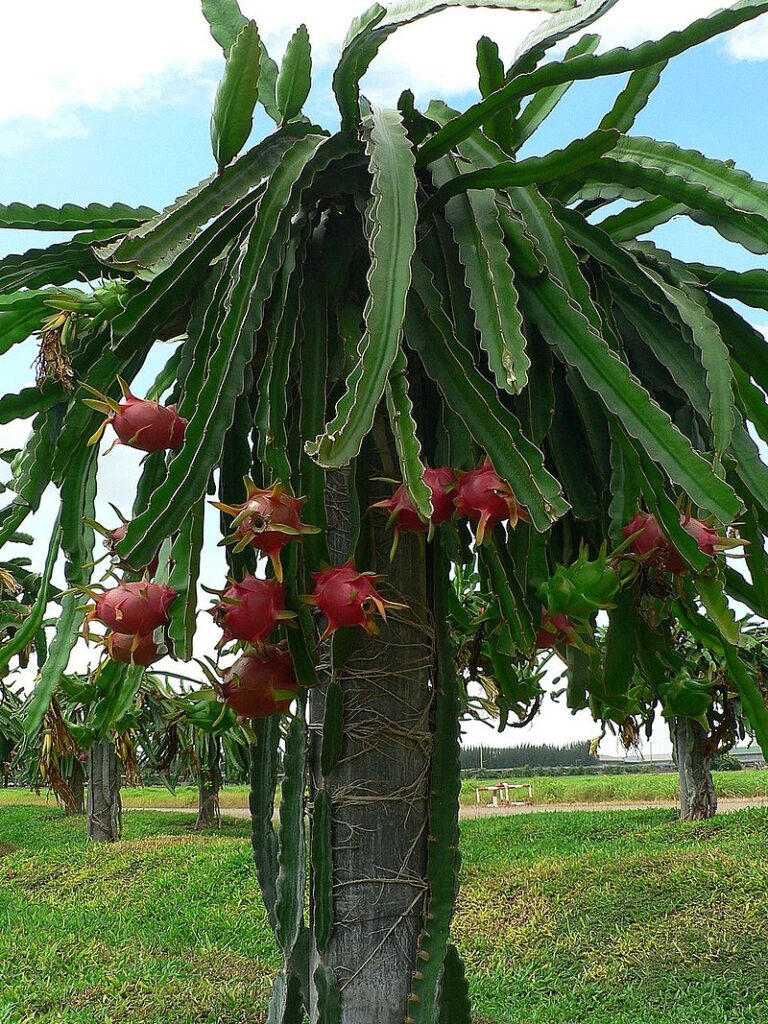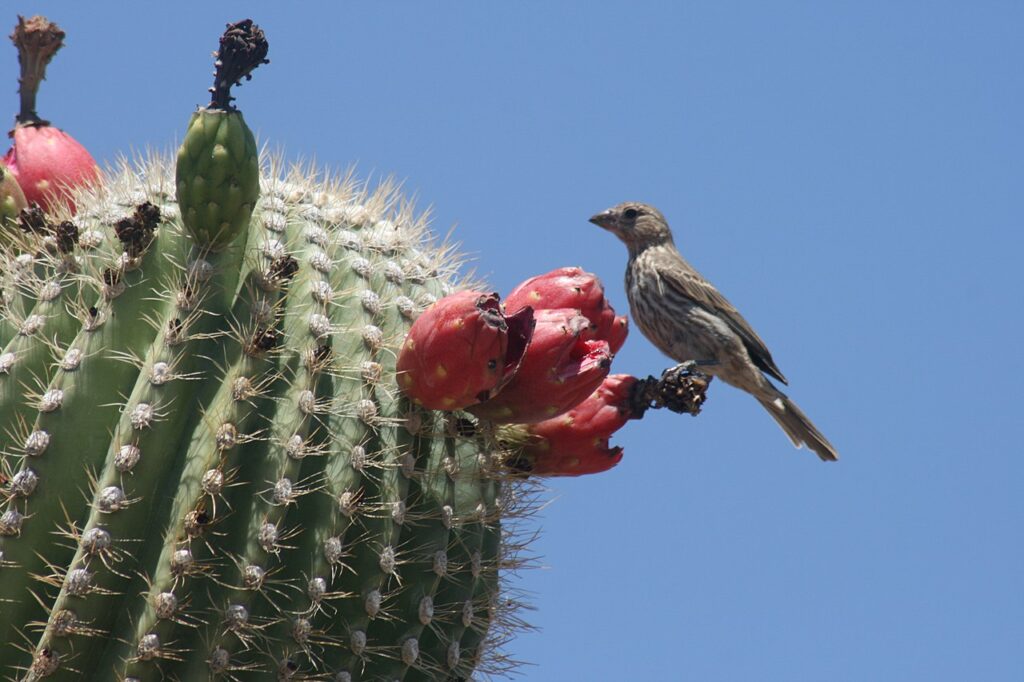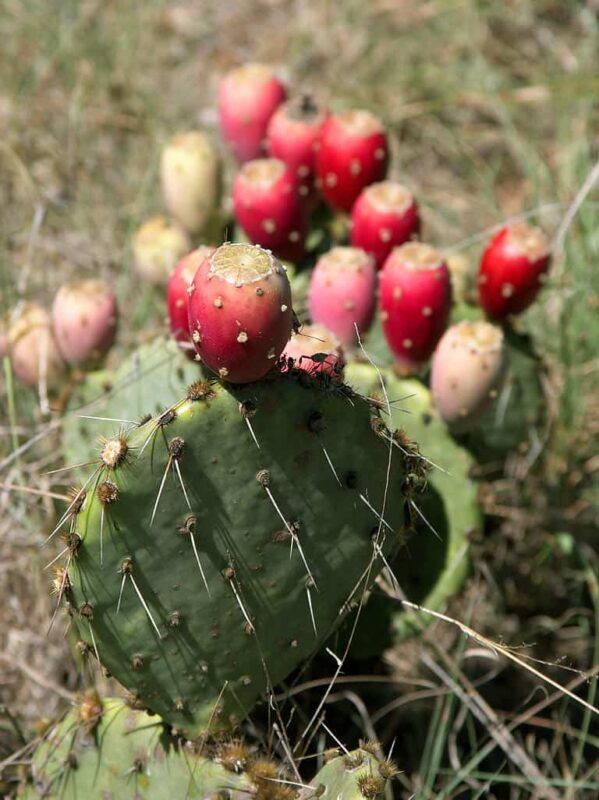We largely think of food coming from lush landscapes. Green fields yield most of the food eaten by the majority of the world. This is fair. While most people don’t live in deserts, it is true that plenty of people do, and they have relied on food sources found growing in places where it rarely rains. Today, people around the world are looking at cacti as an exotic and fun food for tacos and cocktails, but desert plants have been around as long as the deserts.
In the desert, in a survival situation, you can eat cactus fruits, but the water from the cactus is best left alone. The water contains acids and alkaloids that are hard for humans to tolerate and are rough on the kidneys. Some cactus species can cause diarrhea, vomiting, and even temporary paralysis. There are a couple of exceptions in the prickly pear and the fishhook barrel cactus. They are both unpleasant to eat raw but could give you hydration if ingested in small quantities. Cactus fruits are a better option.
There are plenty of types of cacti fruit that are edible, but there are also kinds that need to be left alone. It is also important to be aware that there are cactus species that are illegal to harvest on your own, particularly on state or federal lands.
What Kind Of Cactus Can You Eat?
There are several different types of cacti that are safe to eat. Some have edible fruits, while on others, the edible parts are the cactus leaves. Some of the main examples you’ll see of edible cacti include dragon fruit cactus, saguaro fruit, prickly pear fruit or prickly pear leaves (often called nopales), barrel cactus fruits, Peruvian apple cactus, and cholla cactus.

Dragon Fruit Cactus
The dragon fruit cactus is an easy starting place for the beginner who’s never eaten cactus before. This type of cactus grows in Mexico and Central America, as well as in Asia. In Asia, it’s often called Strawberry Pear. In Latin America, it’s called pitaya. The fruit comes in red and yellow varieties. It’s eaten like many other common fruits. Cut the leathery outer skin in half, then eat the flesh inside. The seeds inside are also edible. Some of the health benefits of dragon fruit include vitamin C, antioxidants, and magnesium.

Saguaro Cactus Fruits
If you don’t live in the Sonoran Desert, you may not know the term saguaro, but you’ve likely seen the familiar cactus depicted in movies and television. Saguaro cactus are typically 40 feet tall, with the highest one recorded reaching 78 feet high. These cacti have spines along their rough green skin. They have a main trunk with branches growing off the sides that turn up toward the sky, often appearing like arms. What you may not have seen in a Western movie is that from May to July, the Saguaro cactus grow crowns of fresh fruit. They’re often well out of reach at 20 feet or more off the ground, so it’s common for the birds to get the fruit before humans reach it. The delicious fruit is eaten by slicing it in half and eating the pulpy center, which is loaded up with tiny black seeds.
These edible cactus fruits are protected in the state of Arizona by The Native Plant Protection Act. Anyone wanting to harvest Saguaro fruits will need a permit. This makes fresh saguaro fruit a particularly rare treat.

Prickly Pear
The fruit and leaves of the Prickly Pear are edible. The fruit is often referred to as “tuna” (by Spanish speakers) or “fig” (by French speakers). Its scientific name is opuntia ficus-indica. The prickly pear fruit hits its ripe season in September through December. It can sometimes be found in grocery stores, especially in Mexico. It tastes similar to a strawberry mixed with a watermelon.
Prickly pear leaves can be eaten year-round and are often called nopales. Nopal cactus are a common part of Mexican diets. The cactus leaves have a texture that can seem offputting to people who’ve never eaten them before. Nopales are slimy. Those familiar with okra may find the two foods to be similar. Nopales are often eaten in tacos and salads but have been made into many other meals as well. Some people swear by a good glass of Nopales juice.

Barrel Cactus Fruits
The large spines of the barrel cactus are enough to keep most humans and animals away, despite the bright yellow fruits growing on their crowns. With thick gloves and a careful hand, foragers can find barrel cactus fruits from November through March. As long as you avoid the large spines and protect your bare hands, you can grab the fruit and twist it safely off the cactus. The fruit isn’t something you’re likely to find in a grocery store, so this is only something adventurous outdoors people will discover on their own.
The fruit is yellow and has a tangy flavor. When cut in half, the fruit is full of tiny black seeds, like many other fruits harvested from cacti. The seeds are safe to eat. Some people may find the fruit too strong to eat raw, like a lemon. It can be cooked up for baking in a cake or bread if that’s the case.

Peruvian Apple Cactus
The Peruvian Apple Cactus grows in South America. This cacti species grows in tall columns with beautiful white flowers that eventually become the fruit that is often compared to Dragon Fruit. The outer shells are a dark red that opens up to reveal a white flesh with tiny black seeds, like many other edible cactus fruits. The flesh is sweet and is often eaten with a spoon.

Cholla Cactus
You aren’t going to see Cholla Cactus fruits on many menus or in grocery stores. This is because the fruit is renowned for being difficult to harvest. The cactus has long dark green arms covered in thin, long spines. It’s sometimes called the “jumping cholla” because of how it seems like the spines must jump right off the plant to get into people’s clothing and skin. It’s just that difficult to get them loose.
People who are bound and determined to harvest cholla cactus fruit on their own will want to wear thick gloves and still use a pair of tongs to try and free the fruit from the tops of the cactus. A sharp knife will be needed to attempt to remove the spines.
The fruit ripens in the spring from March through May in the American Southwest. The fruit is very sweet and works well in syrups.
Note that the two Ls in Cholla are pronounced like the letter y in English. This is a common Spanish pronunciation. The word “Cholla” is said more like “Choy-uh”.
What Types Of Cacti Aren’t Safe To Eat?
Most cactus fruits are safe to eat, but any outdoors enthusiast knows that it’s always better to be safe than sorry. There are several types of cacti that should be avoided because they can cause hallucinations and stomach problems. Some of the most famous cacti to avoid include peyote, the San Pedro cactus, and the Bolivian cactus.
What Time Of Year Can You Eat Cactus Plants?
Nopal cactus leaves can be enjoyed year round. Many cactus fruits are found in the late fall through December, while others start in early spring and last until June. It’s uncommon to find cactus fruits in the hottest months, which means you’re unlikely to see any in August in the Northern Hemisphere when the sun has dried them out.
How Big Do Cactus Get?
This depends on the type of cactus. A barrel cactus is only a couple of feet tall, while a Saguaro cactus averages 40 feet high.
Does Eating Cactus Have Health Benefits?
Nopales are known to have anti-inflammatory properties and have benefits for people with diabetes and high cholesterol. Like most fruits, cactus fruits are high in vitamin C and other essential nutrients.
How Do People Serve Cactus?
It depends on the cactus and the person. For fruits, many people simply cut them in half and eat them with a spoon. The fruits are also often turned into syrups or jams, depending on the level of sweetness.
Nopales have been eaten in many different ways. People who want to avoid the slimy texture may cook them up several times to release the slime and create a new, soft consistency for the nopales. Nopales can be eaten in salads, tacos, boiled and made into a jam, grilled on the barbecue, juiced, made into a vegetable soup, mixed into a salsa, or even just eaten raw. People have found plenty of ways to enjoy cactus leaves and it’s difficult to underestimate the many ways creative cooks have found to serve nopal cactus.
When Is The Best Time To Harvest Cactus?
One of the interesting things about foraging for cacti is that you won’t want to do it in the afternoon. Not only is it hot for humans in the desert at that time of day, but it’s also hot for the cactus. If you’re looking to forage prickly pear leaves, you’ll find that the ones you gather in the afternoon taste very acidic. Harvest cactus leaves in the morning to a mid-morning time frame for the best flavor.
Edible Cacti Are A New World Of Flavor
While humans have been enjoying edible plants in the desert for a very long time, cacti are a new world of culinary exploration for many. As it becomes more popular to forage for less common cacti there will definitely be more creative and modern ways to enjoy the fruits and prickly pear leaves. As always, if you’re looking to harvest edible plants on your own, make sure you double-check your sources, and in the case of gathering cacti, be careful of the spines.
Recent Posts
The only venomous snakes in Washington State are Northern Pacific Rattlesnakes. The Northern Pacific Rattlesnake (Crotalus oreganus oreganus) is a sub-species of the Western Rattlesnake. Anyone...
Skunks are not classified as true hibernators. But they go into a state of torpor when the weather gets cold. Skunks are light sleep hibernators, along with opossums, bears, and raccoons. ...

